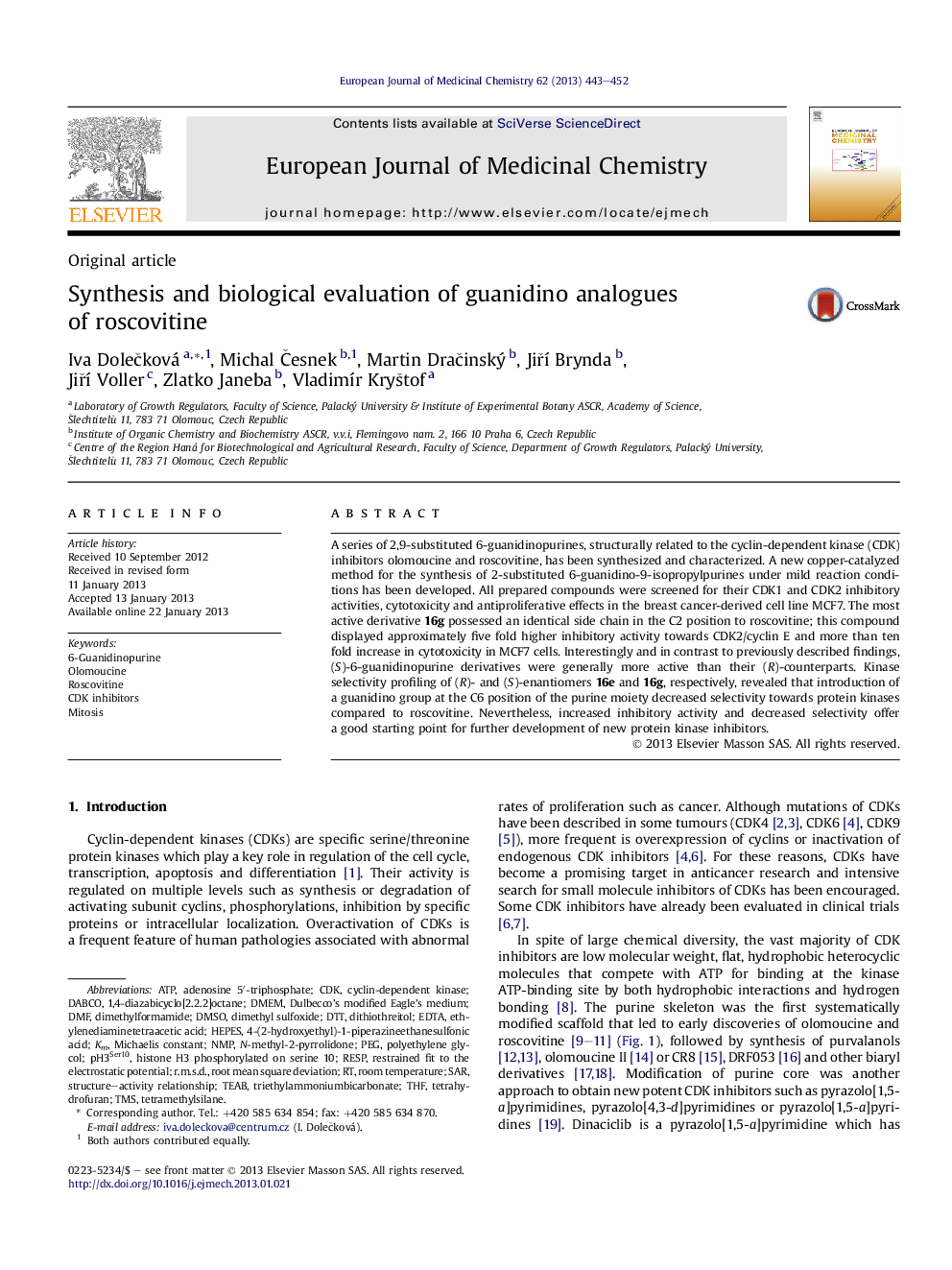| Article ID | Journal | Published Year | Pages | File Type |
|---|---|---|---|---|
| 1394319 | European Journal of Medicinal Chemistry | 2013 | 10 Pages |
A series of 2,9-substituted 6-guanidinopurines, structurally related to the cyclin-dependent kinase (CDK) inhibitors olomoucine and roscovitine, has been synthesized and characterized. A new copper-catalyzed method for the synthesis of 2-substituted 6-guanidino-9-isopropylpurines under mild reaction conditions has been developed. All prepared compounds were screened for their CDK1 and CDK2 inhibitory activities, cytotoxicity and antiproliferative effects in the breast cancer-derived cell line MCF7. The most active derivative 16g possessed an identical side chain in the C2 position to roscovitine; this compound displayed approximately five fold higher inhibitory activity towards CDK2/cyclin E and more than ten fold increase in cytotoxicity in MCF7 cells. Interestingly and in contrast to previously described findings, (S)-6-guanidinopurine derivatives were generally more active than their (R)-counterparts. Kinase selectivity profiling of (R)- and (S)-enantiomers 16e and 16g, respectively, revealed that introduction of a guanidino group at the C6 position of the purine moiety decreased selectivity towards protein kinases compared to roscovitine. Nevertheless, increased inhibitory activity and decreased selectivity offer a good starting point for further development of new protein kinase inhibitors.
Graphical abstractFigure optionsDownload full-size imageDownload as PowerPoint slideHighlights► We synthesized and characterized a series of 2,9-substituted 6-guanidinopurines. ► Inhibition of CDKs and antiproliferative effects in MCF7 cells were examined. ► Increased potency in comparison with roscovitine was observed. ► The compounds were less selective towards protein kinases compared to roscovitine.
